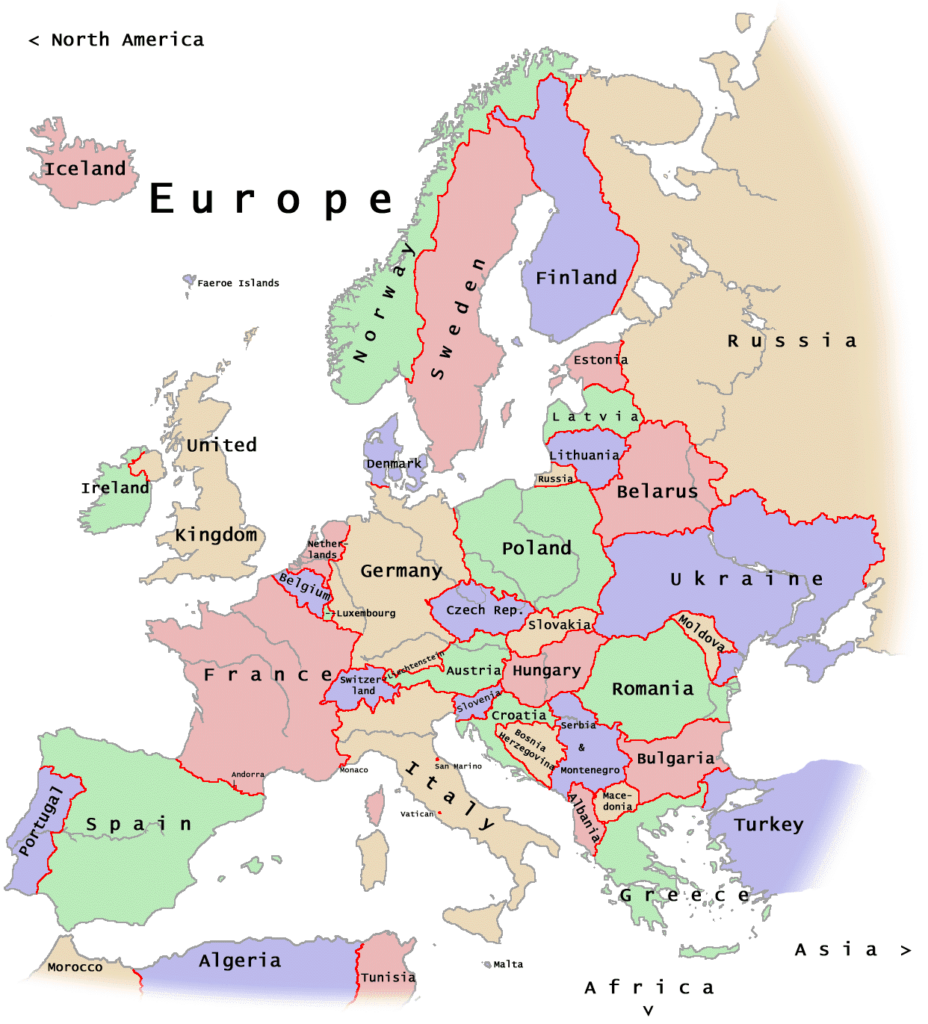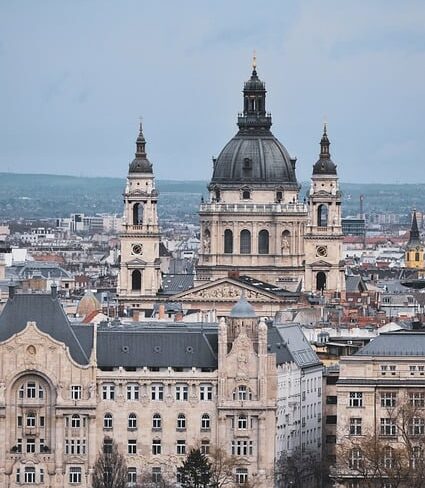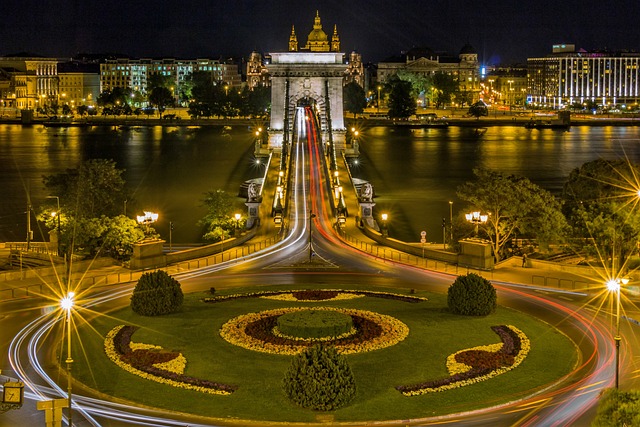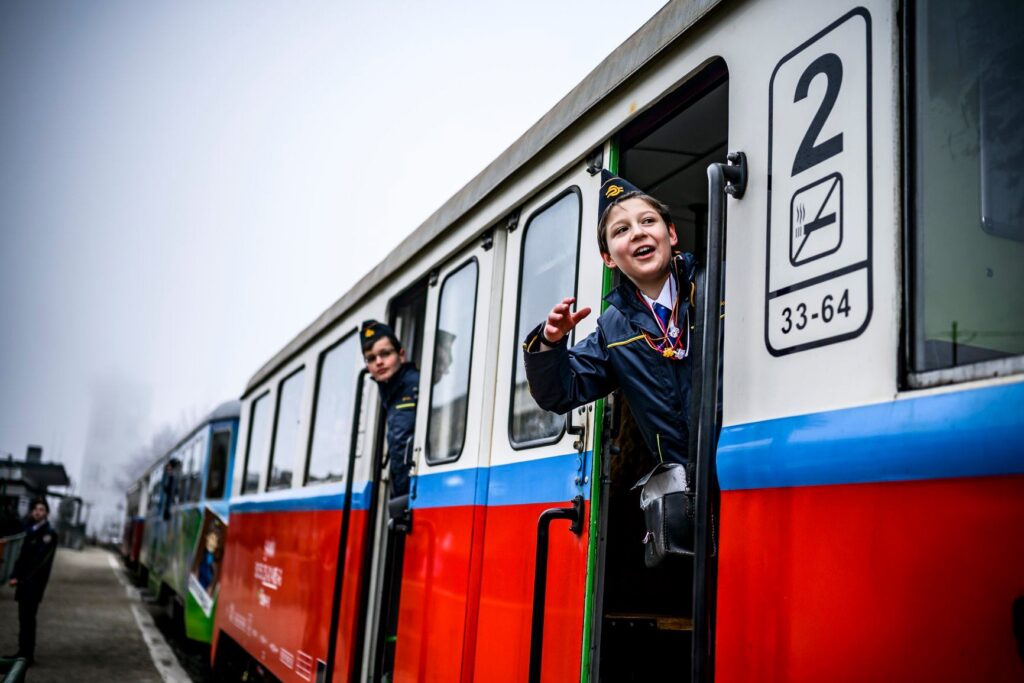Hungary
Grades 5+
 It was the year 1846 when Ábrahám Ganz, a talented engineer, crafted a magnificent machine, a steam locomotive named “Austro-Daimler” in the heart of Hungary.
It was the year 1846 when Ábrahám Ganz, a talented engineer, crafted a magnificent machine, a steam locomotive named “Austro-Daimler” in the heart of Hungary.
It was a significant milestone in Hungary’s railway history. The Austro-Daimler locomotive showcased the country’s growing industrial prowess and its determination to embrace the power of railways.
With its gleaming metal surfaces and powerful chugging engine, Austro-Daimler quickly became a symbol of progress and innovation. Its first journey was met with awe and excitement, as people marveled at this steam-powered iron beast. The locomotive’s arrival revolutionized transportation like never before. It sparked a sense of unity among the Hungarian people, for it connected cities, towns, and villages.
As the years went by, Hungary’s railway network expanded, weaving its way through picturesque landscapes and bustling urban centers.
 Among the long history and many achievements of Hungary’s railroads, there is one particular line that stands out, capturing the imagination of both young and old alike. Nestled in the enchanting Buda hills of Budapest, it is a railway like no other. A place where children dress as engineers and other railroad personnel and step into roles typically reserved for adults.
Among the long history and many achievements of Hungary’s railroads, there is one particular line that stands out, capturing the imagination of both young and old alike. Nestled in the enchanting Buda hills of Budapest, it is a railway like no other. A place where children dress as engineers and other railroad personnel and step into roles typically reserved for adults.
At the far end of the street sits a small train station with a single track. The station (called Gyermekvasút) is run by children. They dress in uniforms and organize in a formation reminiscent of the military. But these are not military personnel. They are young children operating a railway.
 As the train approaches, the children work together in harmony. The conductor signals to start, and the engine roars to life. The children run the railway with skill and precision. They adjust the speed, and the train begins to move, screeching through the hills of Buda.
As the train approaches, the children work together in harmony. The conductor signals to start, and the engine roars to life. The children run the railway with skill and precision. They adjust the speed, and the train begins to move, screeching through the hills of Buda.
The schoolchildren, aged 10 to 14, have completed a training course. They are responsible for operating the train, including its signals, points, and other equipment. They also act as ticket inspectors, ticket sellers, and signalers. They do everything except drive the train. For insurance reasons, that is reserved for an adult conductor.
 The train and its personnel are a picture of happiness. Ironically, opened in 1948, this railway had dark origins. It was created by the Soviet Union to train young children in the ideals and values of communism. The children were taught to obey orders without question and to carry out duties diligently. As the train rolled along the tracks, they sang songs of loyalty to the state and pledged their allegiance to the communist cause.
The train and its personnel are a picture of happiness. Ironically, opened in 1948, this railway had dark origins. It was created by the Soviet Union to train young children in the ideals and values of communism. The children were taught to obey orders without question and to carry out duties diligently. As the train rolled along the tracks, they sang songs of loyalty to the state and pledged their allegiance to the communist cause.
The railway was the first children’s railway in the world, and it is still popular. Today, it is used for educational purposes, a way to provide a safe and fun way for children to learn about trains and railway operations.
Hungary Activity 1
- What are the differences in meaning between these two sentences?
The train slowly begins to move.
The train begins to move slowly
- Draw and label a tree for the following sentence:
The railway was the first children’s railway in the world, and it is still popular.